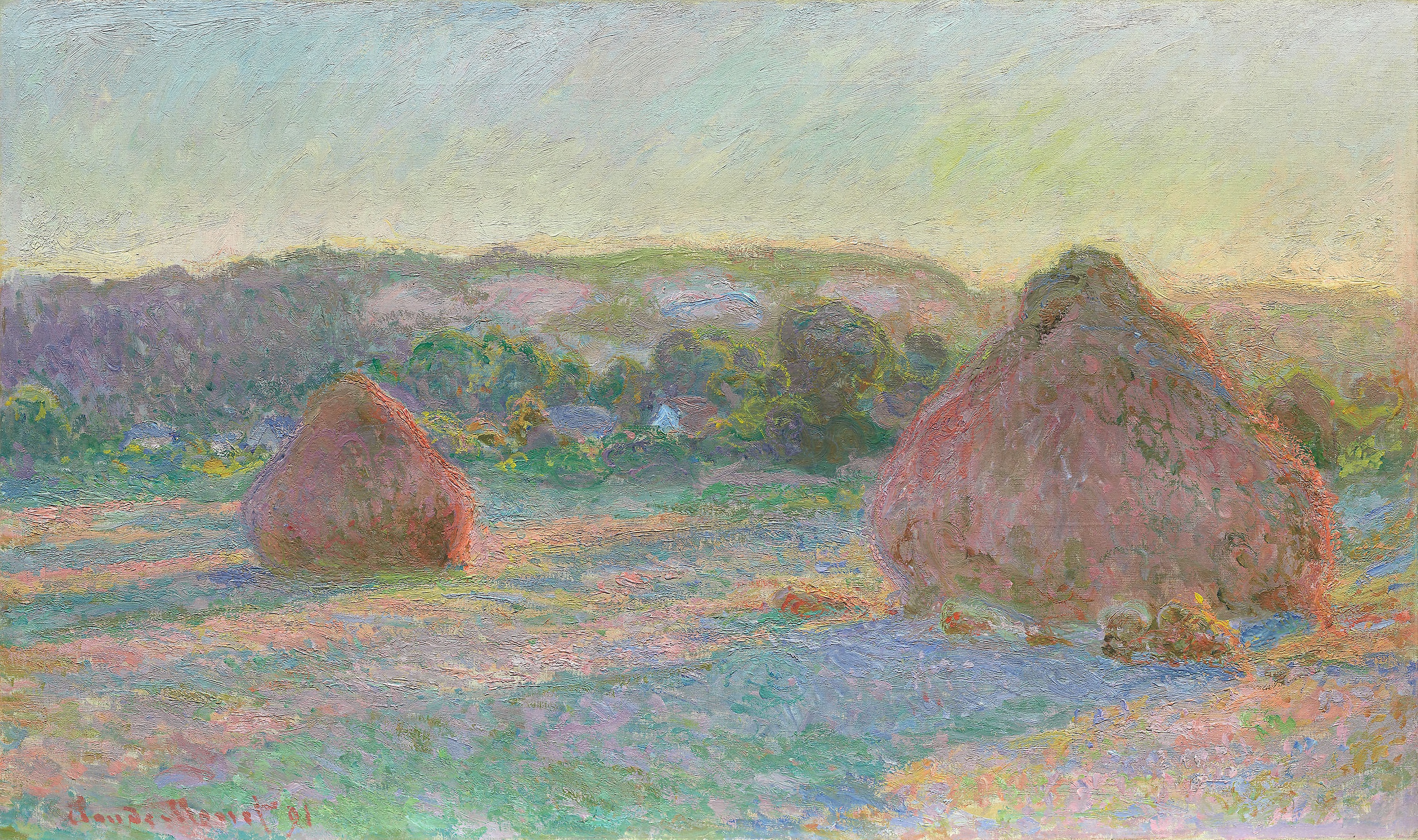Monet, Wheatstack series
In the early 1890s, Monet began working in a series format, painting the same subject over and over. His motifs included wheatstacks, Rouen Cathedral, and a line of poplar trees. His goal was to show the same subject at different times of the day and year, and under different weather conditions, believing life is not fixed but in continual flux. Again and again Monet painted a two-dimensional triangular wheatstack (occasionally he painted two) superimposed on top of a field in the foreground, with a line of trees, houses, and distant hills at the horizon, and with the sky above. With composition out of the way, Monet concentrated on color, his first love, which he changed from one painting to the next, theoretically to capture atmospheric and light conditions but also to have a free rein with color.


In Wheatstack, Sun in the Mist of 1891, Monet used basically two complementary colors, orange and blue, pitting them against each other to make the entire image vibrate. Monet’s flickering brushwork, now long streaks of varying length and direction, increases the shimmering effect and give his wheatstacks a dreamy, haunting quality. Like the English landscapists Constable and Turner, Monet focused on capturing atmospheric effects.[1]

- Penelope J.E. Davies, et. al. Janson’s History of Art: The Western Tradition, (Upper Saddle River, NJ: Pearson, 2007), 881. ↵

